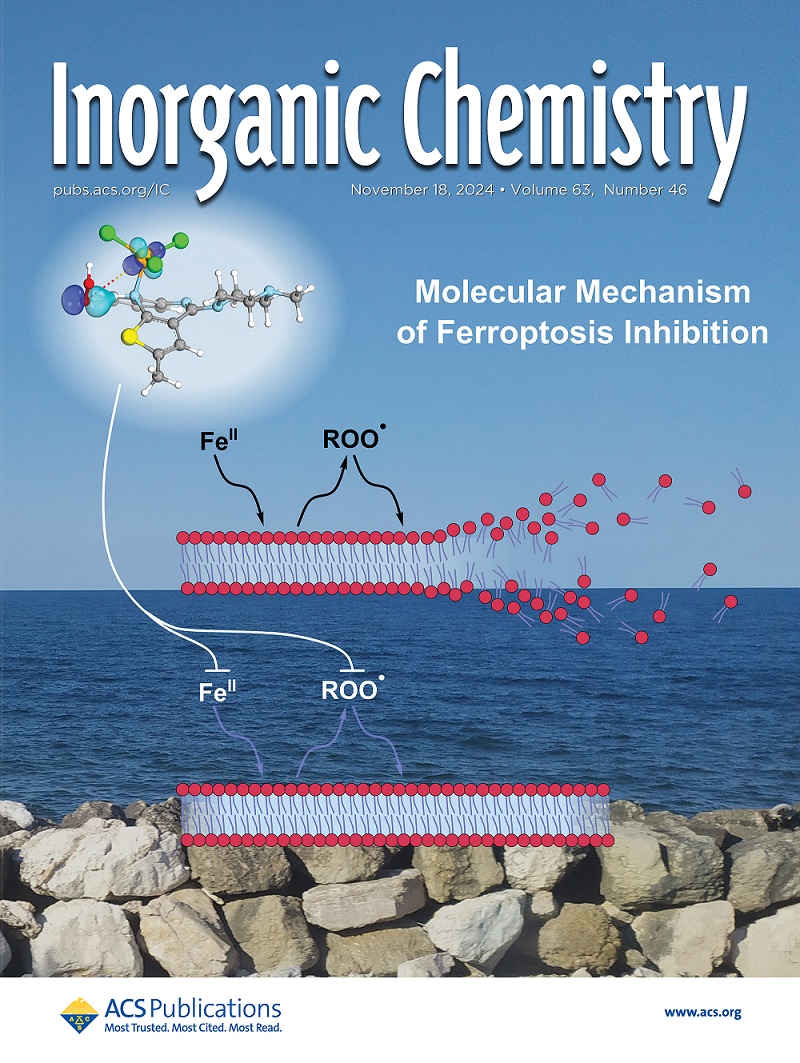Mitochondria-Localized and Aggregation-Induced Near-Infrared Emission Iridium(III) Complexes for Photodynamic Therapy.
IF 4.3
2区 化学
Q1 CHEMISTRY, INORGANIC & NUCLEAR
引用次数: 0
Abstract
In recent years, the optical functional materials of iridium(III) complexes have attracted much attention due to their excellent photophysical properties and potential biomedical applications. Among them, aggregation-induced emission (AIE) properties have shown significant advantages in photodynamic therapy (PDT). In this work, three new iridium(III) complexes with near-infrared emission were designed and synthesized, and their crystal structures were determined. All complexes exhibited significant AIE phenomena. Especially, Ir-1 containing an -NH2 functional group exhibited a unique hollow nanoparticle morphology, excellent mitochondrial targeting ability, and high reactive oxygen species (ROS) efficiency, which is expected to play an important role as a new type of nanoprobe in the field of PDT. The complex has the ability to generate both type I and type II ROS, which makes it a potent photosensitizer for the efficient phototherapy of hypoxic tumors. What is more, the complex has dual functions of PDT and chemotherapy, and their synergistic effect greatly enhances the antineoplastic effects of the reagent.线粒体定位和聚集诱导的近红外发射铱(III)配合物用于光动力治疗。
近年来,铱(III)配合物的光学功能材料因其优异的光物理性能和潜在的生物医学应用而备受关注。其中,聚集诱导发射(AIE)特性在光动力治疗(PDT)中显示出显著的优势。本文设计合成了三种具有近红外发射的铱(III)配合物,并测定了它们的晶体结构。所有配合物均表现出明显的AIE现象。特别是含有-NH2官能团的Ir-1具有独特的中空纳米颗粒形态、优异的线粒体靶向能力和较高的活性氧(ROS)效率,有望作为一种新型纳米探针在PDT领域发挥重要作用。该复合物具有生成I型和II型ROS的能力,这使其成为一种有效的光敏剂,用于缺氧肿瘤的有效光疗。复合物具有PDT和化疗的双重功能,它们的协同作用大大增强了试剂的抗肿瘤作用。
本文章由计算机程序翻译,如有差异,请以英文原文为准。
求助全文
约1分钟内获得全文
求助全文
来源期刊

Inorganic Chemistry
化学-无机化学与核化学
CiteScore
7.60
自引率
13.00%
发文量
1960
审稿时长
1.9 months
期刊介绍:
Inorganic Chemistry publishes fundamental studies in all phases of inorganic chemistry. Coverage includes experimental and theoretical reports on quantitative studies of structure and thermodynamics, kinetics, mechanisms of inorganic reactions, bioinorganic chemistry, and relevant aspects of organometallic chemistry, solid-state phenomena, and chemical bonding theory. Emphasis is placed on the synthesis, structure, thermodynamics, reactivity, spectroscopy, and bonding properties of significant new and known compounds.
 求助内容:
求助内容: 应助结果提醒方式:
应助结果提醒方式:


